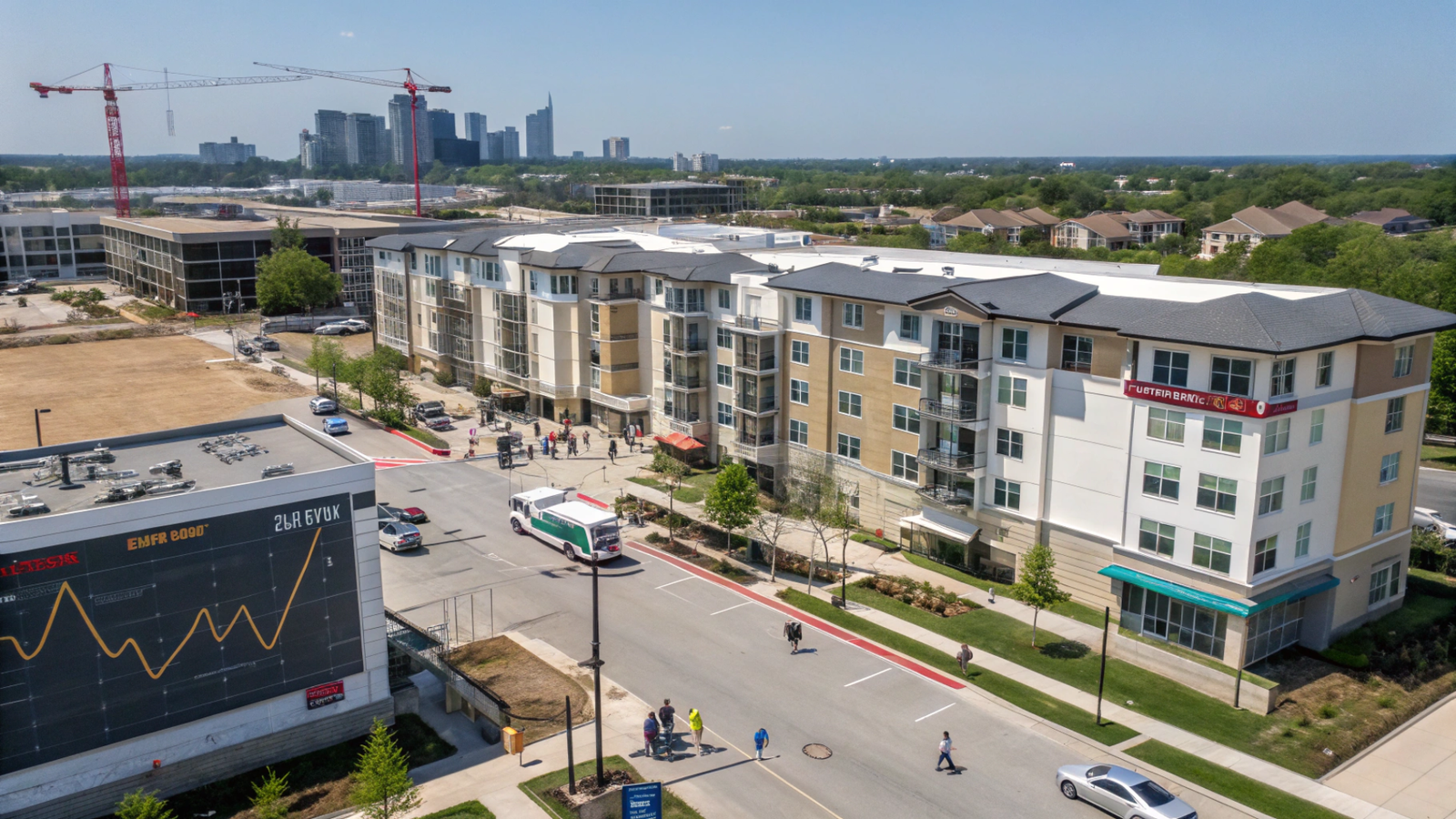Is this the comeback we’ve been waiting for—or just another market head fake? I’ve watched this industry cycle through false starts before, so when I hear that multifamily housing is rebounding in early 2025, I’m not just asking what’s moving—I’m asking what’s underneath it.
Table of Contents
ToggleU.S. Multifamily Market Rebound: Key Insights for Buyers and Investors
According to recent reports from sources like Yardi Matrix and RealPage, the U.S. multifamily market is showing renewed growth as of Q1 2025. National rent growth turned positive after months of stagnation, vacancy rates have stabilized, and new lease activity is trending upward. This comes after a sluggish 2024, when interest rates and construction delays held back momentum.
Expert Insights: What This Rebound Could Actually Mean
1. Investor Confidence Is Returning—But It’s Selective
After a long cooldown, institutional and small-scale investors are slowly re-entering the market. But they’re not betting on just any city. Markets with resilient job growth (think Dallas, Atlanta, and Charlotte) are seeing the most activity, while overbuilt metros like Austin are still under pressure.
Stat to Watch: According to CBRE, cap rates for Class B properties compressed slightly in early 2025—indicating renewed investor appetite in mid-tier assets.
2. New Construction Isn’t Slowing Fast Enough
While demand is improving, supply is still catching up from overzealous construction in 2022–2023. Nearly 500,000 units are set to hit the market this year—many in cities that were already oversupplied. That mismatch will keep rent growth muted in some regions despite broader recovery headlines.
Why It Matters: Investors banking on quick rent hikes may be disappointed if local supply still outweighs demand.
3. High Interest Rates Are Still a Drag on Affordability
The Fed hasn’t cut rates as aggressively as many expected. Mortgage rates hovering above 6.5% continue to push potential buyers into the rental market—but also make it tougher for developers to refinance or start new projects.
4. Secondary Markets Might Outperform the Usual Favorites
With affordability strained in major metros, renters and investors are looking to secondary cities with lower price points and better ROI potential. Places like Louisville, Albuquerque, and Birmingham are quietly becoming 2025’s sleeper hits.
Investor Tip: Look for emerging job markets with below-average vacancy rates and strong net migration.
What Should You Do Now? Practical Guidance by Audience
If You’re a Homebuyer:
- Lock your mortgage rate early if you’re under contract. With rates unpredictable, a lock can protect you from sudden increases during closing.
- Compare lenders—not all offer the same lock periods or float-down options.
If You’re a Multifamily Investor:
- Focus on cash flow over appreciation in the near term.
- Target Class B and C properties in high-migration cities with strong employment bases.
- Consider rate cap strategies if you’re financing with adjustable-rate debt.
If You’re a Developer or Builder:
- Be cautious with starts in saturated markets. Stabilization doesn’t mean it’s time to build everywhere.
- Partner with experienced GC firms to manage construction costs, which are still volatile.
Micro Q&A:
What is a mortgage rate lock?
A mortgage rate lock lets you secure your interest rate for a set period—typically 30 to 60 days—while you finalize your home purchase. This protects you from rate hikes before closing but may require a fee if extended.
Is It a Real Rebound—or Just a Breather?
We’re seeing real movement, but it’s uneven and full of nuance. Supply overhangs, high interest rates, and regional variations all mean this rebound won’t lift all boats equally.
Ask yourself:
- Am I making decisions based on today’s fundamentals or yesterday’s expectations?
- Do I have a game plan if rates stay higher for longer?
- Am I in a market that’s truly absorbing new supply—or just riding a temporary high?
Subtle Solution
Platforms that streamline lender comparisons or property underwriting—like digital mortgage marketplaces or investor dashboards—can help buyers and investors move with more confidence in a fast-shifting market.
Reader Q&A
Should I wait for rates to drop before buying or investing?
Not necessarily. If the deal works at today’s rates and cash flows, future drops are just a bonus—not the plan.
How do I know if a market is overbuilt?
Track local vacancy rates, permits issued, and rent growth trends via sources like REIS, Zillow, or local MLS reports.


